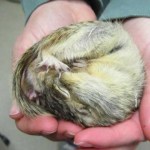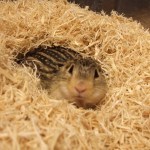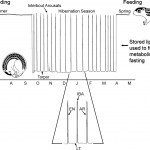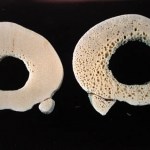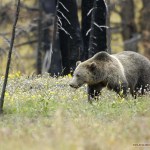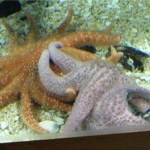hibernation
Highlights from today's sessions included:
Norelia Ordonez-Castillo, undergraduate student from Fort Hays State University, presented her research on channel catfish. According to Norelia, these fish can become obese so her research was geared towards trying to find out how their receptor for LDL cholesterol differs from rodents and humans. But what I want to know is whether the obese catfish tastes better...
Image of channel catfish by Ryan Somma via Wikimedia Commons
Christine Schwartz, Investigator from University of Wisconsin-La Crosse, studied how the brain of hibernating…
By Shanghai killer whale (Own work) [CC BY-SA 3.0 (http://creativecommons.org/licenses/by-sa/3.0)], via Wikimedia Commons
I just read an interesting blog from the I Spy Physiology website sponsored by the American Physiological Society which described results from a recent study suggesting that chronic fatigue syndrome (CFS) might be a human equivalent to hibernation.
Chronic fatigue syndrome reportedly affects over 2.5 million people in the United States alone. People with this condition have the type of fatigue that does not seem to improve, even with adequate…
Image of common hamster by katanski - Own work, CC BY 3.0, https://commons.wikimedia.org/w/index.php?curid=10550799
During hibernation common hamsters (Cricetus cricetus) alternate their time between bouts of torpor during which their metabolic rate drops and body temperature is low and arousal during which body temperature is normal. Hibernation allows animals to conserve energy although it is not without costs as it often results in memory deficits, cell damage and reduced immune function. Thus some studies have suggested that animals with sufficient food stores will not…
I am very excited about the upcoming 3rd annual Michigan Physiological Society Meeting on May 12-13 in Detroit. This society is a local chapter of the American Physiological Society. I am most excited by their choice of a Comparative Physiologist for the keynote address: Dr. Hannah V. Carey from the University of Wisconsin School of Veterinary Medicine. Dr. Carey is a Past-President of the American Physiological Society. She will be presenting her research on how the gut microbiome of hibernators changes seasonally as well as the symbiotic relationship between the gut microbes and the…
Still going strong...here are the highlights from several sessions held on Day 4:
Drawing of Lake Whitefish by William Converse Kendall - Kendall, William Converse, b. (1909) Fishes of the Connecticut Lakes and Neighboring Waters, with Notes on the Plankton Environment, Report of the Commissioner of Fisheries, 1906-1907, Washington, DC: Government Printing Office, p. 39 Fig.1, Public Domain
John Eme (California State University, San Marcos) presented data testing the effects of varying temperatures mimicking overwintering conditions on embryonic development of Lake whitefish. He…
Image of a hibernating thirteen-lined ground squirrel from University of Minnesota Duluth researcher Matthew Andrews.
Thirteen-lined ground squirrels (Ictidomys tridecemlineatus) are really cute when they hibernate (above). During torpor bouts, their body temperature decreases to a few degrees Celsius and their metabolism drops by as much as 95% with heart rates ranging from only 3-10 beats per minute. These bouts of torpor are interrupted by periodic arousals every couple of weeks during which their metabolism increases as body temperature elevates to 37 degrees…
Arousal of a thirteen-lined ground squirrel from hibernation. By Uncredited; Walter L. Hahn [Public domain], via Wikimedia Commons
In a new study published in the American Journal of Physiology Regulatory, Integrative and Comparative Physiology, researchers at the University of Wisconsin, La Crosse were interested in understanding how thirteen-lined ground squirrels protect their brains during arousal from hibernation. This is a period of time in which the animals experience major changes in their body temperature and increased blood flow to the brain. The researchers knew…
Dr. Frank van Breukelen, Comparative Physiologist, University of Nevada, Las Vegas
Dr. Frank van Breukelen is an Associate Professor in the School of Life Sciences at the University of Nevada, Las Vegas. He was invited to tell us about a new research project in this laboratory about some really cool mammals called tenrecs.
Here is the post:
In a recent post, Dr. Dolittle mentioned a talk that we gave at the Experimental Biology meetings in Boston. We discussed some of our recent data on tenrecs in a symposium about physiological plasticity- the ability of an animal to change its physiology…
I was very impressed by the graduate and undergraduate students who presented their research at the Scholander poster competition sponsored by the Comparative and Evolutionary Physiology section of the American Physiological Society this afternoon. I am sure the winner of the competition will be very difficult to select.
Some highlights included:
Bridget Martinez, graduate student at the University of California - Merced whose research focused on hormonal changes that occur with fasting in elephant seal pups. In mammals, food deprivation leads to lower…
Congratulations to Mallory Ballinger, a graduate student from the University of Minnesota-Duluth, who is the 2015 recipient of the Dr. Dolittle Travel Award! The purpose of this award is to recognize an outstanding graduate student or postdoctoral fellow involved in comparative and evolutionary research and to provide assistance for them to attend the annual American Physiological Society Experimental Biology meeting. The application process includes the submission of a blog entry based on their research. She will be presenting her research at the upcoming Experimental Biology…
Image of Gould's long-eared bat from http://www.wiresnr.org/Microbats.htmlImage by: Lib Ruytenberg
I came across a neat study published recently in the American Journal of Physiology - Regulatory, Integrative and Comparative Physiology which examined how bats arouse from hibernation, a period during which their body temperature and metabolism are low. To minimize the high energetic costs of warming up during arousal, bats use solar radiation or take advantage of fluctuations in the ambient temperatures (i.e. environmental).
Researchers studied hibernating long-eared bats (Nyctophilus…
Image from the American Physiological Society's website.http://www.the-aps.org/mm/Conferences/APS-Conferences/2014-Conferences/…
Wednesday was the last day of the meeting that culminated in a closing banquet with an awards session to honor students who had exceptional presentations. What an impressive group of young comparative physiologists! The plenary lecture was given by Dr. Steven Chown (Monash Univ, Australia). He spoke about climate change forecasts and continuing environmental changes and how important it is to understand how animals adapt to changing conditions in order to…
Image from the American Physiological Society's website.http://www.the-aps.org/mm/Conferences/APS-Conferences/2014-Conferences/…
Tuesday was no less exciting than Monday!
Here are some highlights:
I thoroughly enjoyed a session called "Overcoming a Major Physiological Barrier: Adaptation from Saline to Freshwater Habitats" which highlighted the need for several species to shift how they regulate ion balance when they migrate between fresh water (ion absorption from the water) and salt water (ion secretion to the water).
Clements K, Bojarski L, Johnson K, McMillan S, White L, Angert E (Univ…
Image from the American Physiological Society's website.http://www.the-aps.org/mm/Conferences/APS-Conferences/2014-Conferences/…
As anticipated, the meeting today was excellent! Here are some highlights from today:
Dr. Michael Joyner (Mayo Clinic) spoke about how we should reconsider animal models that are used in research as laboratory rodents can be manipulated to match their genotype to their phenotype. In other words, researchers modify the animal's genome to produce a specific disease or attribute they are interested in studying. The problem with this approach is that genes can be…
I am very excited about the upcoming Experimental Biology conference that starts next weekend. I just looked through the Spring newsletter for the Comparative and Evolutionary Physiology section of the American Physiological Society. Check out the exciting programming in comparative physiology at this year's conference:
Monday, April 28
10:30 AM – 12:30 PM
Featured Topic: Abstract-Driven Trainee Session
3:15 PM – 5:15 PM
Featured Topic: Comparative Physiology of Aging and Senescence
Tuesday, April 29
8:00 AM – 10:00 AM
CEPS Symposium: RNAseq Approaches to…
Image of a grizzly bear at Yellowstone National Park from http://free-naturewallpaper.com/nature-images/animals/bears/Grizzly-at-…
I was so excited to see a story featuring grizzly bears (Ursus arctos horribilis) in the Wall Street Journal yesterday. The article was about how Dr. Kevin Corbit at Amgen Inc. is studying grizzly bears in the Bear Center at Washington State University to learn more about obesity. The 12 animals living in the facility were either rescued from places where they were captured after getting too close to humans or were born at the facility. Dr. Corbit was quoted in…
Ok, I'll admit, this post is kind of stolen from the fabulous Ed Yong of Not Exactly Rocket Science, who just won the Association of British Science Writers' Best Newcomer award! Imitation is the most sincere form of flattery, Ed. :)
Well, the post isn't stolen, but the subject is. And it's actually been a little disappointing. When I first scanned the title, I thought it said "echinoderm", rather than "echidna", and I thought "Starfish sex!!! w00t1!!!" But no. Instead of talking about these getting it on:
(oh yeah)
We're talking about these:
(Via Ed)
You see? It's just...not the…
If the idea of a cold, motionless sexual partner isn't one of your turn-ons, then you're clearly not an echidna. The males of these spiny Australian animals will happily mate with females even if they're hibernating.
Gemma Morrow and Stewart Nicol from the University of Tasmania have spent the last decade studying the short-beaked echidnas of Tasmania. Over that time, they discovered many instances of males mating with torpid females in deep hibernation, or with females who roused themselves briefly only to re-enter their deep slumber. Over the last two years, the voyeuristic duo use a…
